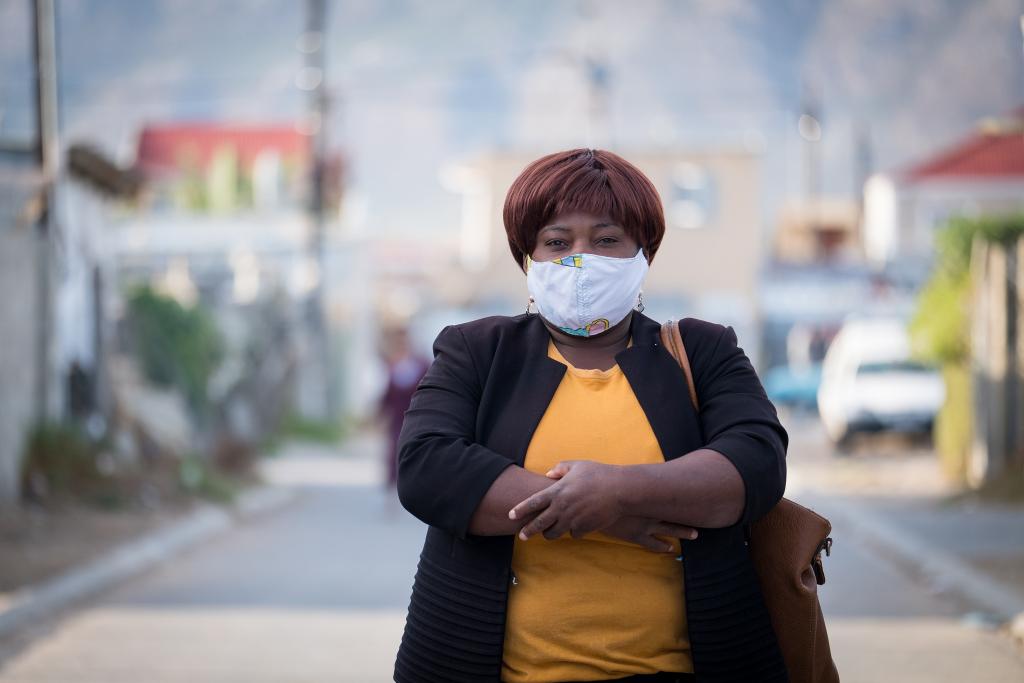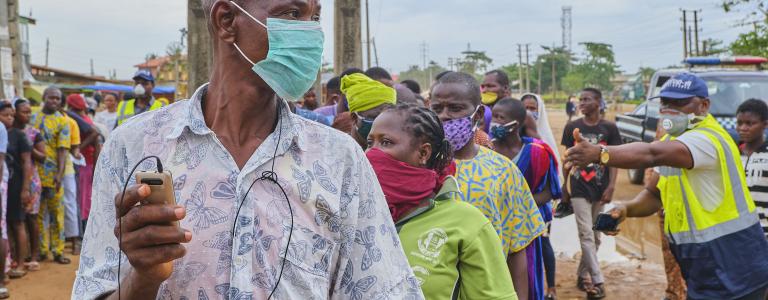Toward a Sustainable and Transformative Recovery in Sub-Saharan Africa
There is no doubt COVID-19 shattered progress toward the Sustainable Development Goals (SDGs). On top of a horrific loss of life, an additional 95 million people globally could be thrust into poverty and hunger because of the pandemic. Two decades of global development progress are at risk of disappearing in a single year.
Governments around the world are responding to the crisis with unprecedented stimulus packages, both to answer immediate health needs and to cushion the economic downturns that immediately followed national lockdowns. While ubiquitous financing efforts are being deployed in Sub-Saharan Africa (SSA) to put economic growth and well-being back on track, the overall pandemic recovery efforts need to be more sustainable and transformative if they are to avoid two possible threats: lagging further behind the 2030 Agenda deadlines and long-term prosperity and resilience downturns.
Recovery, financing, and the 2030 Agenda
As part of the recovery effort, Nigeria’s Central Bank planned to support manufacturing and other key sectors of the economy with NGN 1 trillion (USD 2.7 billion). The West African Central Bank (BCEAO) took a series of measures aimed at widening commercial banks’ liquid assets, supporting small and medium-sized enterprises (SMEs), relaxing loan conditions, and digitizing transactions to minimize contacts. Social protection measures in Kenya and South Africa have translated into cash transfers and unemployment insurance. To date, fiscal stimuli are widespread in SSA, debt repayments are being frozen or forgiven, official development assistance is well mobilized, and philanthropic initiatives are on the rise.
However, a rapid increase in financial support must be strategically deployed if it’s to put sustainable development back on track. A deluge of capital is not a solution in itself. Countries could misallocate or poorly target financial resources, leaving some sectors in precarious positions even as others become flooded with capital. Financial resources may be invested in low-priority, low-impact activities, such as fossil fuel subsidies or political campaigns. On the latter point, the 2020 elections in many countries loom as a possible threat to COVID-19 recovery – especially if individual wills win out over national priorities.
The UN Department of Economic and Social Affairs (DESA) recently warned about the risks of ad hoc financing, underfunding, and a lack of long-term goals in recovery policies that can take countries away from the 2030 Agenda. Its report stresses the capacity of the SDGs as a framework to address the impact of the pandemic and guarantee a better recovery. Aligning COVID-19 financing with the 2030 Agenda seems an ideal strategic choice, but its effectiveness in SSA is hampered by a serious challenge: the vast majority of developing regions do not have clear ideas of what it will cost them to reach the SDGs despite efforts to mainstream the Goals into national development plans.
Why does this matter for the 2030 Agenda and pandemic recovery? Many of the elements of society most deeply impacted by the pandemic—including good health, decent work, robust social support, care for mental health, freedom from domestic violence—are at the heart of the SDGs. Hence, a more efficient recovery strategy should be the one designed around the 2030 Agenda and its targets. It is essential to understand what it would cost to avert the impact of the COVID-19 on preponderant Goals, such as hunger, and how to estimate the required investment needed for each Goal nationally.
Both the recovery and the SDGs entail significant financing interventions in various sectors. Lack of coordination between the two types of interventions can rapidly deplete the limited financial resources and lead to misallocations and duplications. Understanding the size and composition of the investment needs is critical to developing more efficient and realistic financing strategies for both the recovery and the 2030 Agenda. The costing exercise can help to adequately catalyze the financing needs for each sector and target of the SDGs, including those hit by the pandemic in a single lens.
As noted by Guido Schmidt-Traub, Executive Director of the UN Sustainable Development Solutions Network, costing the SDGs helps to better identify knowledge gaps, feasibility and scalability of the Goals; design public and private contributions; assess public expenditure needs and track the investment gaps; and identify external official financing needs to close the gap.

Toward a transformative and sustainable recovery
Efforts to mainstream the SDGs in COVID-19 recovery should be complemented by a full revisit of the concept of growth. Economic growth has been the overriding ambition of national governments for the past century—the key indicator used by leaders to declare “things are going well.” It has been impressive for decades: six of the top fastest-growing SSA economies in 2018 were in West Africa. Yet, inequality in the region is among the highest in the world.
COVID-19 has upended GDP forecasts, shrinking both supply and demand. The global pandemic is pushing millions into poverty, but it is important to remember millions were already there despite years of sustained GDP growth. This coming period of unprecedented international crisis recovery must look beyond GDP expansion as its measure of success. It should go beyond leveraging industries' productivity and competitiveness; beyond negotiations of contracts and new trade partners; beyond FDI incentives and regulations.
Social capital—translated through actions such as basic services, inclusiveness, and income redistribution policies—should be an important measure in planning and gauging the recovery. For example, according to Oxfam, West Africa loses USD 9.6 billion each year through corporate tax incentives to attract FDI. This is the equivalent of 100 modern and well-equipped hospital each year in each region. The social capital these hospitals would add to their communities must be considered as countries decide how to build back better.
Human capital—particularly education and jobs—should be expanded by taking full advantage of digitization and technology advances. While jobs and the education system in developed economies were able to transition quickly to virtual formats during the pandemic, schools and companies in many SSA countries had to remain closed or in limited operations due to technology, equipment, and software challenges.
Another consideration in shaping pandemic recovery efforts beyond GDP growth is economic diversification, including a firmer emphasis on renewables. Drops in fossil fuel demand from top trading partners (EU, China) and the plunge in global commodity prices have reinforced the need to diversify the region’s economy. This need remains even as the understandable ambition to return to economic growth tempts countries to quickly exploit—and possibly deplete—their natural resources. The recovery should exploit energy-efficient technologies in extractive industries and more diversified sources of revenue.
A sustainable and transformative recovery implies that finance mobilization in SSA should align with an overall SDG financing strategy, with rigorous attention to how much capital goes where. COVID-19 and the 2008 global recession have taught us our economies are far from being resilient. Our plans to build back better ought to be much broader than last century’s outdated thinking.
You might also be interested in
Founder of Midsummer Analytics to speak at FSU’s South Asian Media and Cultural Studies Conference
Robert Smith, founder of Midsummer Analytics and a senior associate with the International Institute for Sustainable Development, will speak at Florida State University on Thursday, Feb. 2, about avenues to replace gross domestic product (GDP) as the central measure of a country’s progress.
Sortir de la dictature du PIB (in French)
Et si introduire de nouvelles mesures qui prennent en compte la qualité de vie permettait de mieux relever les défis environnementaux auxquels nous faisons face ? La réflexion est entamée.
Is it just the heat, or does the concept of 'uneconomic growth' make a lot more sense now?
Something to ponder if you’re stuck in one of the many places so hot now that sitting in a darkened room is recommended, giving you more time alone with your thoughts: are we paying the price for a big mistake?
IGF Case Study: Leveraging Technologies for Gender Equality in Mining Communities
How can sharing technological infrastructure support gender equality and serve the broad betterment of mining communities?
